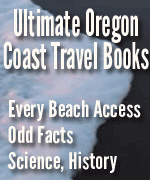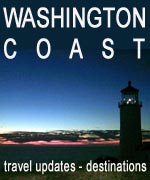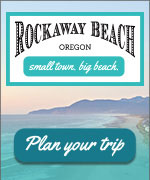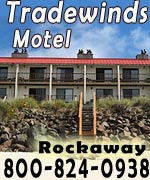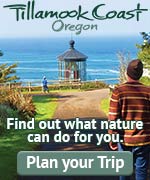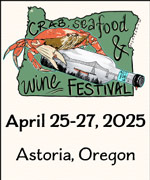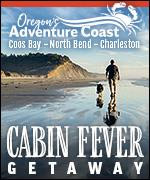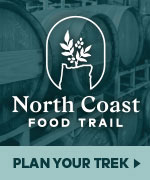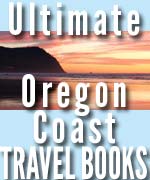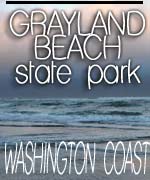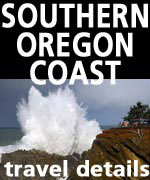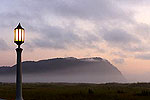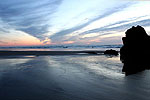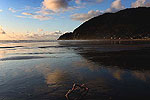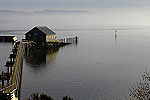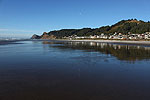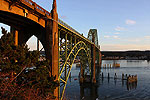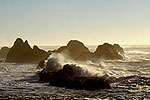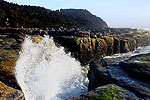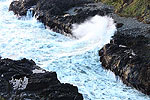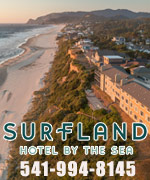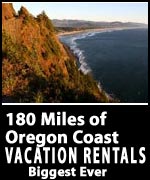Cape Kiwanda, Oregon Coast: Complete Travel Guide, Hiking, Recreation, Safety, History
Updated Constantly
By Oregon Coast Beach Connection staff
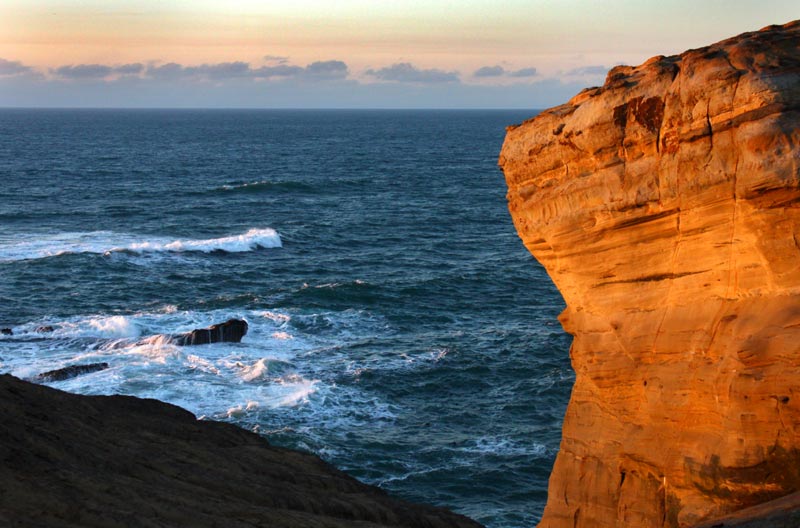
(Pacific City, Oregon) – One of two centerpieces to Pacific City (the other being Haystack Rock), Cape Kiwanda State Natural Area is the southernmost cape in the north Oregon coast's famed Three Capes Loop. It's about a half hour drive from Lincoln City, and about an hour or slightly more from north coast hotspots like Cannon Beach or Seaside. It's also near the dividing line between what is considered the north Oregon coast and the central coast.
Includes exclusive listings; some specials in winter
In Cannon Beach:
Includes rentals not listed anywhere else
In Manzanita, Wheeler, Rockaway Beach:
Some specials for winter
In Pacific City, Oceanside:
Some specials for winter
In Lincoln City:
Some specials for winter
In Depoe Bay, Gleneden Beach:
Some specials for winter
In Newport:
Look for some specials
In Waldport
Some specials for winter
In Yachats, Florence
Some specials for winter
Southern Oregon Coast Hotels / Lodgings
Reedsport to Brookings, places to stay; winter deals
At about 230 feet high (measuring the dune - but 255 feet with the canopy), Cape Kiwanda is still not the tallest of the three capes, but it makes it the tallest dune on the entire coastline.
This guide takes you through many basics of the cape, as well as facts and travel tips not found anywhere else. However, there are numerous details here that will really assist your visit. Look for the links to even more information on the various subjects.
Cape Kiwanda Stats:
Age: appx 18 million years old
Height at Dune: 228 feet high (according to lidar) - Cape appx 44 feet high (measured by lidar)
History: land bequeathed to state for use as park
Open: always open (though nighttime use not a good idea)
See up-to-the-minute Pacific City Weather
Driving is no longer allowed on the beach here, unless you're launching a boat
There is a handicap accessible viewpoint nearby, at the edge of the road going down to the beach. There's an airport here in Pacific City, not far from the beaches. See Approaching Kiwanda, Handicap Accessible Viewpoint.
Hiking up the cape is not easy, but it's only about 30 or 40 feet to get to the top of the rocky section and its viewpoints. There are no specific hiking trails as the area is wide open, though numerous hiking trails weave in and out of the area. See Pacific City / Cape Kiwanda Hiking Trails.
Once at the top the views are legendary. Several sections look straight out to sea, where you can soak in the panoramas and the blindingly beautiful sunsets that can light up this area's golden cliffs into fiery, memorable reds and oranges. See Top of Cape Kiwanda.
Various tide pool areas dot the base, as well as curiously pockmarked cliffs. There's even a small sea cave you can just barely see. Be extremely cautious here, however, and do not even go near this base except in the calmest of conditions. See Cape Kiwanda, Tide Pools, Rocky Crevices.
The Dory fishing fleet is famous here. A tradition that goes back decades, these small boats are most remarkable for the spectacular way they land, which is by heading straight for the beach at a high speed and literally stranding themselves there.
Safety: Stay away from ledges and do not cross the fenced areas. People continuously die here by doing so. That includes the “Punchbowl” area where you look down on wild wave action from one viewpoint, and especially stay clear of the tip (where the “duck bill” rock once resided). Kiwanda's Mighty Mysteries: Astounding, Forbidden Sights.
Parts of the cape are falling apart: be careful and stay behind the fencing area. Fencing Moved Atop Oregon Landmark as Cape Kiwanda Sinkhole Dangers Grow
Kiwanda History: All 185 acres of Cape Kiwanda State Natural Area were acquired from B.A. McPhillips in 1973. Bizarre Oregon Coast State Park History

Recreation Details of Kiwanda
From many angles, the top is downright surreal, like something out of a Yes album cover done by Roger Dean or a Dr. Suess book.
Hotels in Pacific City in this area - Where to eat - Maps and Virtual Tours
It also makes interesting noises, however. If the wind is whipping things up enough, parts of the cape start to sing. You'll hear a variety of whistling noises, likely coming from the pipes that hold the fences, but also quite possibly the wire fencing as well. Sights and Sounds of Cape Kiwanda
That westernmost tip area looks quite alien (the one you need to stay away from). Of historical curiosity: there was a kind of giant ape face visible from here. At least around 2000 it still existed. Later pictures from about 2016 show it having deteriorated quite a lot (according to pics taken of the now-destroyed “Duck Bill Rock” at the time). Kiwanda's Mighty Mysteries: Astounding, Forbidden Sights.
It's a testament to how the cape is slowly disintegrating.
This brings up the subject of the makeup of Cape Kiwanda. Geologically, it began some 15 million years ago, and it's comprised of a number of different kinds of rock materials. Mostly, however, it's mudstone and sandstone, which is much less resilient than the basalt stuff that makes up the other two capes or big well-known features like Tillamook Head.
Consequently, it's eroding much faster than most features of this shoreline. However, it would be eroding even faster if it weren't for the presence of Haystack Rock, which lessens the tidal poundings. See Geology of an Oregon Coast Icon: Sweeping Cape Kiwanda.
At its very northwestern edge, from McPhillips Beach (or by walking down the northern slope of the cape), you can catch site of a wild, chaotic ocean canyon. This was made visible by the eroding of Kiwanda, when an arch hanging over that section collapsed. The subsequent pile of rocks created a dam at that end which allowed people to peek around the rocks that was normally cut off by a long tide line. Photos of Manic Moods of Cape Kiwanda
More information links:
Startling Oregon Coast: Manic Moods of Cape Kiwanda. About a mile north of the parking lot for Cape Kiwanda, you’ll find an unmarked, one-lane road that mysteriously wanders down a steep hill to the west. This is still Cape Kiwanda State Natural Area, but a section otherwise known as McPhillips Beach.
Cape Kiwanda: Wild Canyon Full of Ocean. Under certain conditions, the ocean sounds a bit like the roar of a small jet engine in the distance. Perhaps it’s just the acoustics of the sound of the waves bouncing around the cliff walls, but it’s an unusual and delightful facet of this spot.
Crazy History of Cape Kiwanda State Natural Area: Cape Kiwanda Almost Had Nuclear Power Plant: Bizarre Oregon Coast State Park History The park got its start after a nuke plant was proposed on the cape
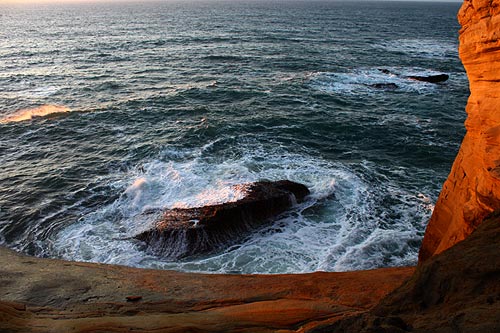
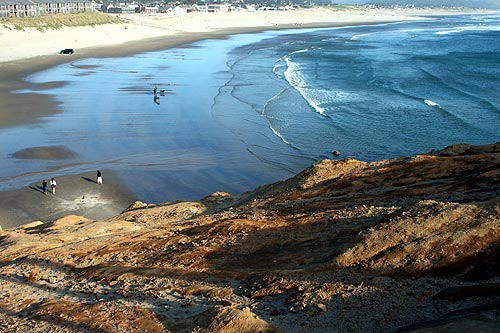
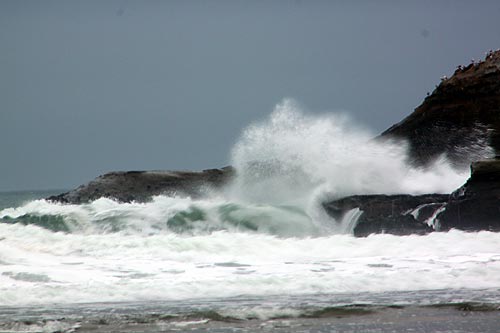
Oregon Coast Vacation Rentals
Oregon Coast Lodging Specials
More About Oregon Coast hotels, lodging.....
More About Oregon Coast Restaurants, Dining.....
 Andre' GW Hagestedt is editor, owner and primary photographer / videographer of Oregon Coast Beach Connection, an online publication that sees over 1 million pageviews per month. He is also author of several books about the coast.
Andre' GW Hagestedt is editor, owner and primary photographer / videographer of Oregon Coast Beach Connection, an online publication that sees over 1 million pageviews per month. He is also author of several books about the coast.
LATEST Related Oregon Coast Articles
Another Side to Coos Bay's Shore Acres: Oregon Coast Waves of Color at a Lavi...For 100 years now, Shore Acres Garden has created a quiet spectacle
Oregon Heritage / History Projects Get a Boost, Including Coast Museums, Coos...
Funds for projects in Coos Bay, Tillamook, Seaside, Salem
Video: Central Oregon Coast Lighthouse Finally Gets Lantern Back After Winds ...
Work in Newport was set for Monday but winds were too harsh. Newport lighthouse
Two More Epic Runs of Ride the Dirt Wave on Oregon Coast: Bandon, Newport
Bandon on July 19-20 and in Newport on August 2?3. Newport events
Oregon Coast Tsunami Findings: Port Orford Received Largest Wave at 2.4 ft
See where the other towns came in. Weather
Art Show in Florence Brings Out Talent Around Central Oregon Coast
August showing at the Visitors Center promises something beachy. Florence events
US Coast Guard Calls Off Search for 79-Year-Old Woman Missing in Washington C...
She had been kayaking near Westport
N. Oregon Coast's Dangerous Short Beach (by Oceanside) Slowly Getting a New S...
Several regional groups working on the project to reopen the access
Back to Oregon Coast
Contact Advertise on Oregon Coast Beach Connection
All Content, unless otherwise attributed, copyright © Oregon Coast Beach Connection. Unauthorized use or publication is not permitted




